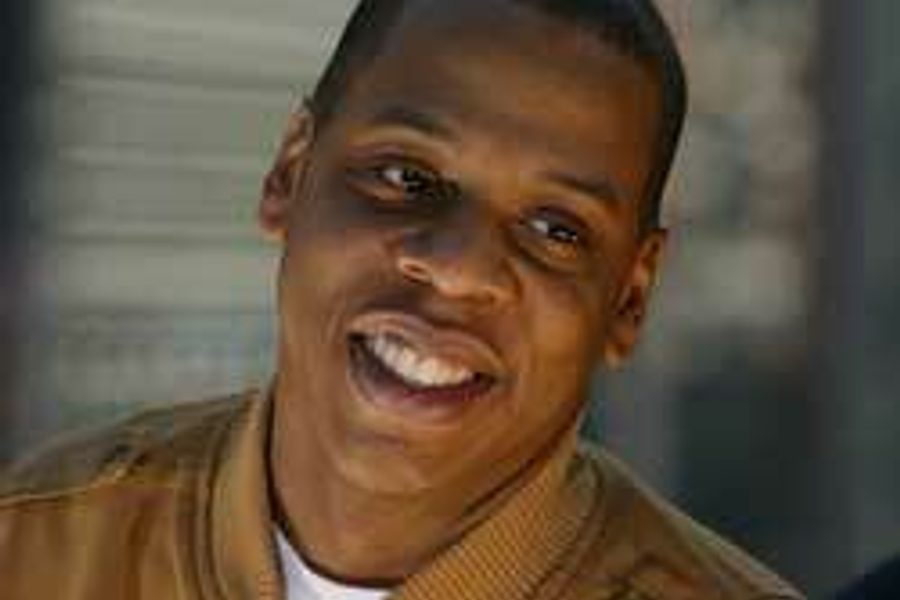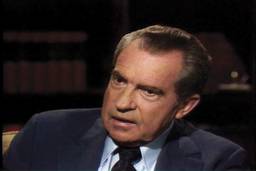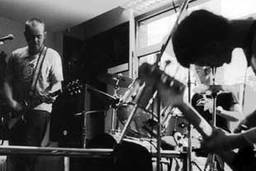
Jay-Z might be the best rapper of his era. He’s more charismatic than Eminem, more fluent than 50 Cent — and at the moment he has the hip-hop world in a state of shock.
Jay’s The Black Album, which came out near the end of 2003, will be his last, according to the Brooklyn native. Just 34, he says he is ready to retire and concentrate on his clothing line, his Manhattan nightclub and other business opportunities.
While he may yet change his mind, the hip-hop press is treating Jay’s departure as the story of the decade. “Jay-Z Retires?” reads the headline on the cover of a recent issue of Vibe, a dozen pages of which are devoted to “pondering his legacy.” It’s a legacy that, as Jay has admitted on many occasions, will have a lot to do with his tireless pursuit of paychecks and loose women — or, as he once put it — “more money, more cash, more hoes.”
Now almost a decade old, Jay’s brash brand of rap has become shopworn. Which is why hip-hop fans should not spend too much time mourning his absence: Jay-Z’s lyrical sensibility has had its time; now it’s time for something else.
Though he has recently tried to tone it down, Jay has consistently demonstrated a genius for fashioning songs from his love of all things bling — Bentleys, bejeweled necklaces and the like. Yet as he was installed as a global celebrity, his vast popularity also served to marginalize the sort of politically minded records on which hip-hop was built.
The earliest hip-hop, which began to infiltrate the mainstream in the ’70s, was music of social protest. The sonic experimentation of Afrika Bambaataa and the righteous anger of Grandmaster Flash were reaching the masses; hip-hop was an urban growth industry. The ’80s were even better, as artists like Public Enemy and Boogie Down Productions proved they could move crowds and make them think, too.
The ’90s, though, were a different story. A decade that might’ve been ruled by the late Tupac Shakur was — at least from a market standpoint — dominated by Snoop Dogg’s fun but fleeting raps and the empty posturing of P. Diddy and assorted clones.
Where P. Diddy is a savvy businessman but not much of a talent, Jay is a singular figure in hip-hop history. He wrote hard-boiled songs about his childhood in Brooklyn’s rough Marcy Projects, but he also was that rare figure who maintained street cred while deriving inspiration from Broadway; his 1998 hit “Hard Knock Life” borrows liberally from the musical “Annie.” But more than anything, he told stories about what it was like to be a young, single and, during the second half of his career, a multimillionaire.
In terms of his bankability, it was sheer brilliance, like the recording industry’s version of James Bond: Watch the swashbuckling Jay-Z roll up in his Benz, intimidate a few wannabe MCs, win the attention of that evening’s “It” girl and repair to his swanky hotel suite for an all-night party.
But as Jay was living very, very large, performers who reached back to the seminal sounds and messages of the ’70s and ’80s — artists like Jurassic 5, Common, Talib Kweli, Black Star — were marginalized. Sure, they got record deals and occasional play on MTV2, but they were, plain and simple, out of fashion.
Consider, for example, the tepid reception afforded one of the best records (in any genre of music) released in recent years, Jurassic 5’s Power in Numbers, which came out in late 2002. A brilliant collaborative effort featuring the work of half a dozen performers (and various guests), it was an infectious and smart record that grappled with gentrification, globalism and national politics. Its tracks were built on spare, old-school beats and an admirable rallying cry — “We try and give you something that you ain’t used to” — yet somehow it was largely ignored.
Whether he emerges from his early adieu, Jay-Z’s legacy is secure. It’s time now to welcome a few more voices to a stage that, with the apparent retirement of a hip-hop Hall of Famer, is wide open.








